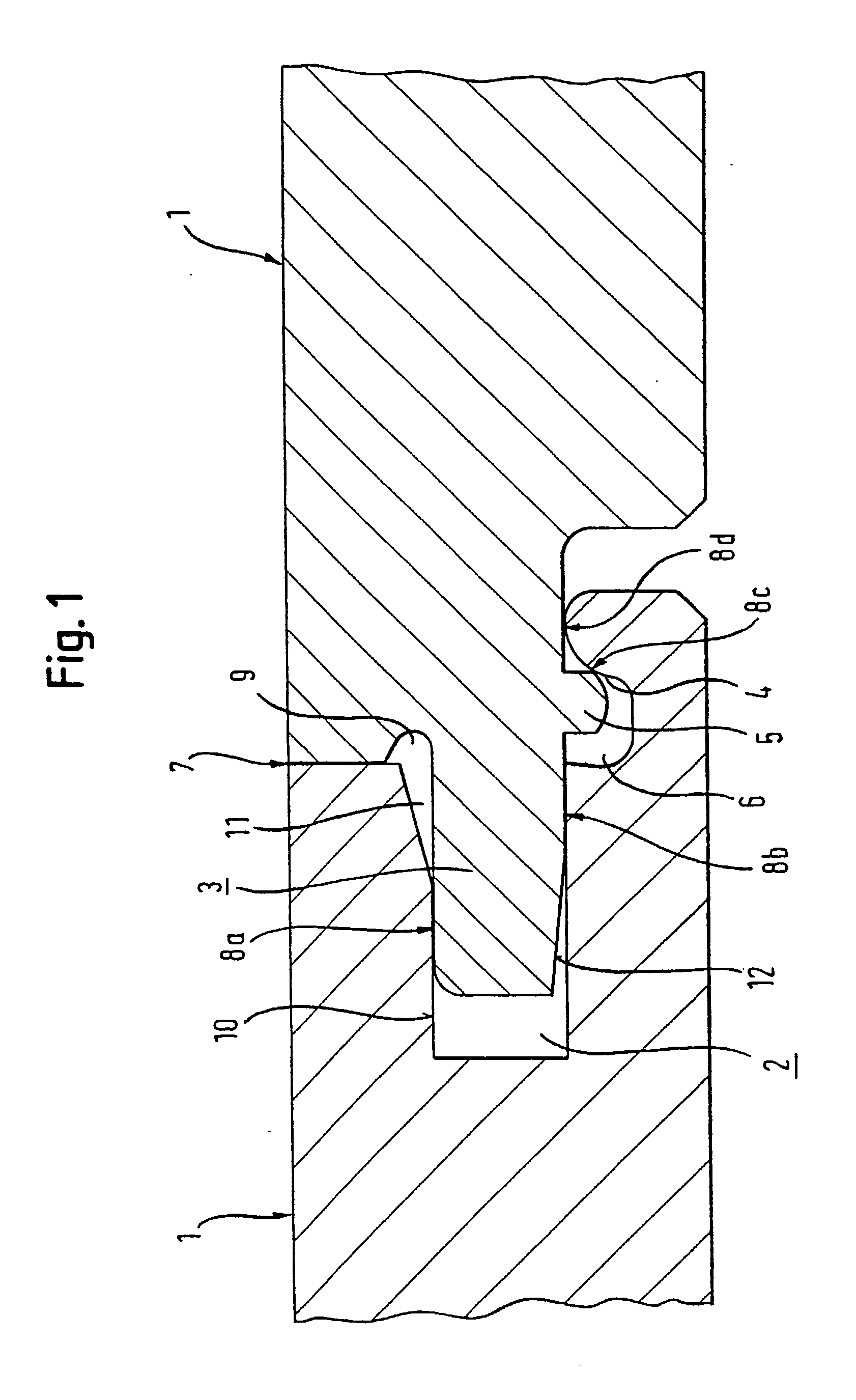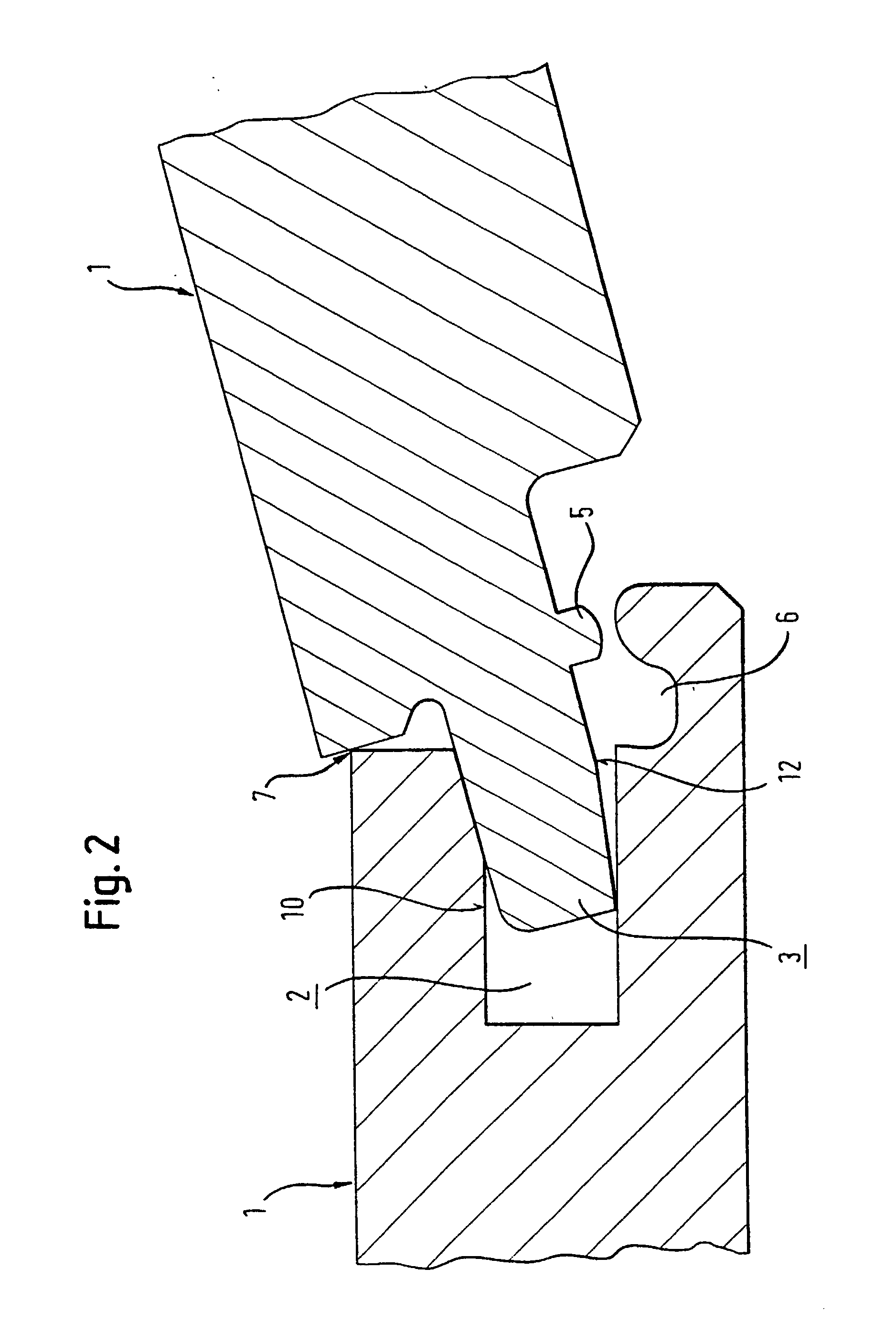Panel element
a panel element and element technology, applied in the field of panel elements, can solve the problems of deformation of the edge of the panel element, excessive force on the edge, and relatively laborious and a nuisan
- Summary
- Abstract
- Description
- Claims
- Application Information
AI Technical Summary
Benefits of technology
Problems solved by technology
Method used
Image
Examples
Embodiment Construction
[0041] Referring now to FIG. 1 there is illustrated two panel elements of the same type identified 1, the one panel element 1 comprising a groove 2 and the other panel element 1 a tongue 3 extending into the groove 2 of the adjoining panel element 1. The material thickness of the panel element 1 is slightly more below the groove 2 or above the tongue 3 than below the groove 2 or the tongue 3 respectively so that pressures exerted by human or furniture loads can be accommodated relatively well in loading the tongue and groove joint to a minimum.
[0042] The two panel elements 1 are safeguard against being lifted out of place by the meshing effect of the groove 2, on the one hand, and of the tongue 3 on the other, they likewise being safeguarded against compression forces acting downwards in addition to the support of the panel element 1 by the sub-floor on which the two panel elements 1 are laid.
[0043] The panel elements 1 are safeguarded against parting forces acting transversely to t...
PUM
 Login to View More
Login to View More Abstract
Description
Claims
Application Information
 Login to View More
Login to View More - R&D
- Intellectual Property
- Life Sciences
- Materials
- Tech Scout
- Unparalleled Data Quality
- Higher Quality Content
- 60% Fewer Hallucinations
Browse by: Latest US Patents, China's latest patents, Technical Efficacy Thesaurus, Application Domain, Technology Topic, Popular Technical Reports.
© 2025 PatSnap. All rights reserved.Legal|Privacy policy|Modern Slavery Act Transparency Statement|Sitemap|About US| Contact US: help@patsnap.com



